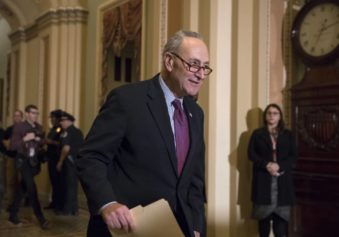While the Affordable Care Act, also known as Obamacare, has been a much-maligned target of social conservatives, progressive Americans should rejoice at a finding contained in a report in The New York Times: Obamacare is reducing inequality in the U.S. — at a time when every other economic pattern shows an increase in inequality.
A closer look at the 10 million people who have coverage through Obama’s signature legislative achievement reveals that the biggest winners are young people (people between ages 18 and 34), African-Americans, Hispanics and people who live in rural areas, according to the Times. Those first three winners are likely the stuff of every conservative nightmare about the impact of Obamacare on the nation. Republicans in Congress have tried to introduce legislation to repeal the health care law dozens of times, and most Republican Congressional candidates were almost required to include repealing Obamacare as a major plank in their election platform.
But the fact that rural residents, who are among the most vociferous anti-Obama Americans, according to recent polling data, have been significant beneficiaries of the Affordable Care Act certainly complicates matters for conservatives.
In fact, the parts of the U.S. that voted more heavily Republican in the 2012 presidential election showed “significantly more insurance gains” than the regions that leaned heavily Democratic. In other words, the president’s signature legislation was more likely to benefit the people who were least likely to vote for him — a result that turns conventional political wisdom on its head about where the spoils typically go after an election. Ironically, this gain on the part of Republican voters is largely because of the correlation between poverty and Republican voters. As the Times points out, “many of the poorest and most rural states in the country tend to favor Republican politicians.”
“The data shows that the law has done something rather unusual in the American economy this century: It has pushed back against inequality, essentially redistributing income — in the form of health insurance or insurance subsidies — to many of the groups that have fared poorly over the last few decades,” the Times story says.
The Times looked at data from the firm Civis Analytics and Enroll America.
The percentage of uninsured African-Americans dropped from 24.1 percent to 16.1 percent in the past year. For Hispanics, the percentage of uninsured went from 26.2 percent to 16.5 percent. Those are both substantial changes, much larger than the drop for whites and Asians. While the percentage of uninsured whites went from 14.1 percent to 10 percent, uninsured Asians dropped from 13.6 percent to 9.7 percent.
While the percentages of uninsured Blacks and Hispanics is still higher than uninsured whites and Asians, the gap has been closed considerably, thus reducing inequality and providing Blacks and Hispanics with a major improvement in their quality of life.
The Times concludes that the single biggest factor in predicting whether an American who had no insurance in 2013 has it now is whether that person lives in a state that expanded its Medicaid program. After the Supreme Court in 2012 gave states the right to opt out of the expansion, the nation was almost cleaved down the middle — 26 states and the District of Columbia expanded Medicaid, while 24 did not. (Pennsylvania will expand next year.) The states that expanded were mostly run by Democrats, while the states that did not were predominantly run by Republicans.
But even in states that didn’t expand, rural residents still benefitted dramatically. The Times points out that the areas with the largest increases in the health insurance rate include rural Arkansas and Nevada; southern Texas; large swaths of New Mexico, Kentucky and West Virginia; and much of inland California and Oregon.


